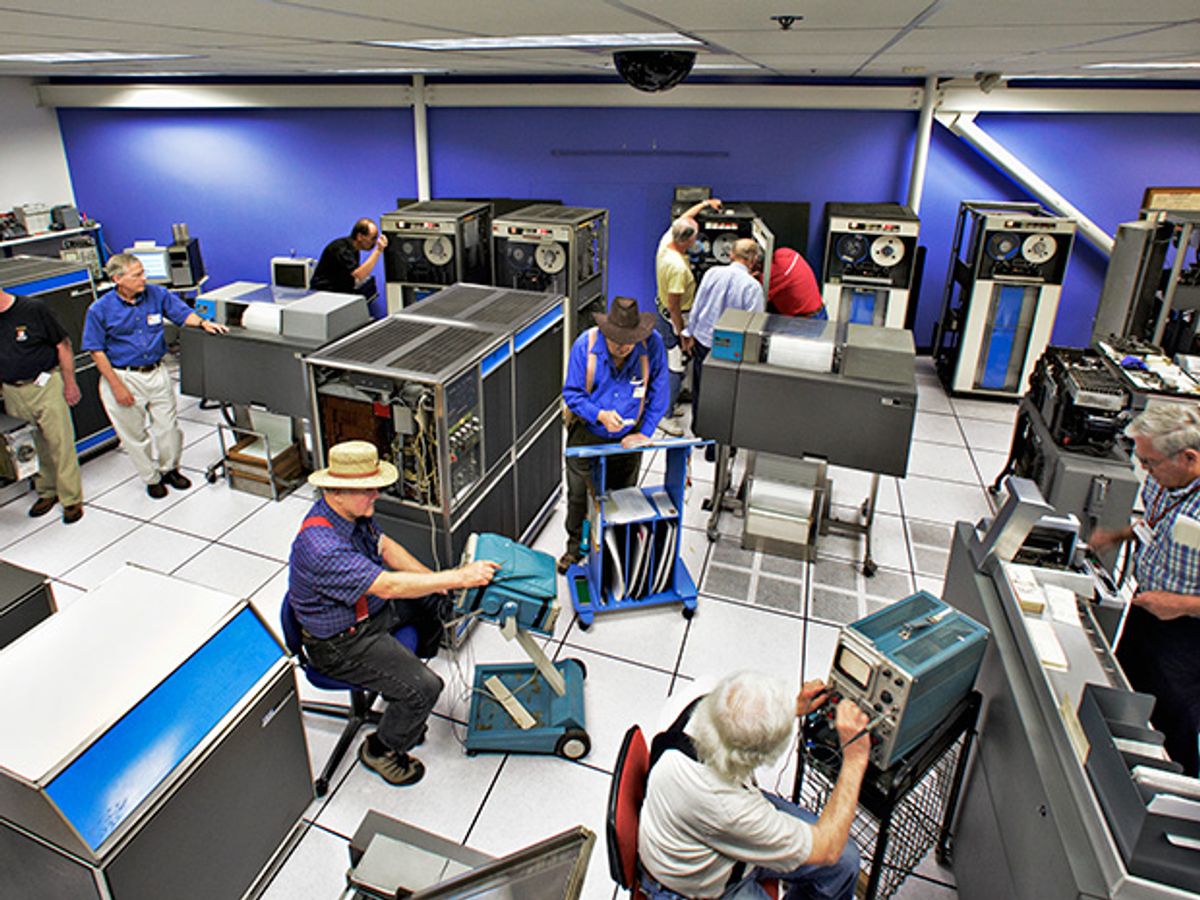Rebuilding the IBM 1401
A gang of veteran engineers breathes new life into the hulk of an old IBM 1401 computer

Many good things from the good old days are gone—children playing outside, fruit that tastes better than it looks, luxurious air travel. But how could anyone get nostalgic about yesterday’s big-iron computers, which were worse than today’s handhelds by every measure?
“There’s nothing like your first love,” says Ed Thelen, a retired engineer who with 30-odd other people has restored a vintage IBM 1401 computer for the Computer History Museum, in Mountain View, Calif. “It’s a mechanical machine: The tape machine has an air sensor, a little rubber diaphragm with contacts on it, and you can see it work. With these modern computers, it’s just magic—they’ve got things a few nanometers long, and you’ll never see them.”
In the 1401’s heyday, in the 1960s, some 9300 units were in use. Together with 6000-odd units of various successor models, by 1967 the 1400 line accounted for half of all the computers in the world. Companies used them mostly to sort things, notably for accounting, payroll, transaction analysis, and inventory control.
The machines have also had cultural resonance. The movie Dr. Strangelove (1964), a dark satire on nuclear war, showed a 1401 in one scene. The Icelandic composer Jóhann Jóhannsson wrote the orchestral work IBM 1401: A User’s Manual (2006), which is available on iTunes.
The machine was a hit because it was simple and inexpensive. The 1401 processed numbers in decimal rather than binary form and accepted numbers of varying digit spans. Companies leased it for US $6500 a month, equivalent to $45 000 today—a bargain for an all-transistor design with stored programs. Such features had been offered only in huge systems costing about six times as much.
The museum got an even better bargain in 2003, when five enthusiasts gave it an old 1401 they’d bought on the German eBay site for a mere 18 000, then about $21 000.
In part, the low price reflects the water damage that occurred during storage in Hamburg, damage the rehabbers took some 10 000 man-hours to repair, typically with old parts. Sometimes it helped that the rehabbers themselves were old: Bob Erickson was servicing IBM equipment for the U.S. Navy in 1943. The selling price also reflects the old-tech fervor of the seller, a German engineer who’d bought the machine for his own use in 1972, when IBM stopped supporting the model, and couldn’t bear to scrap it when its working life was done. And of course, there’s the effect of Moore’s Law: The 1401 system, all 4 tons of it, has about one-millionth the computing power of your $600 desktop PC.
For hard jobs, though, the museum (https://www.computerhistory.org) can always throw more iron into the pot. It now has another 1401, purchased in Connecticut. Together the machines gulp 20 kilowatts, as much as four electric stoves with all their burners glowing red.
To see a bigger verstion of the slideshow, view it here: “The Rebirth of the IBM 1401 Computer.”